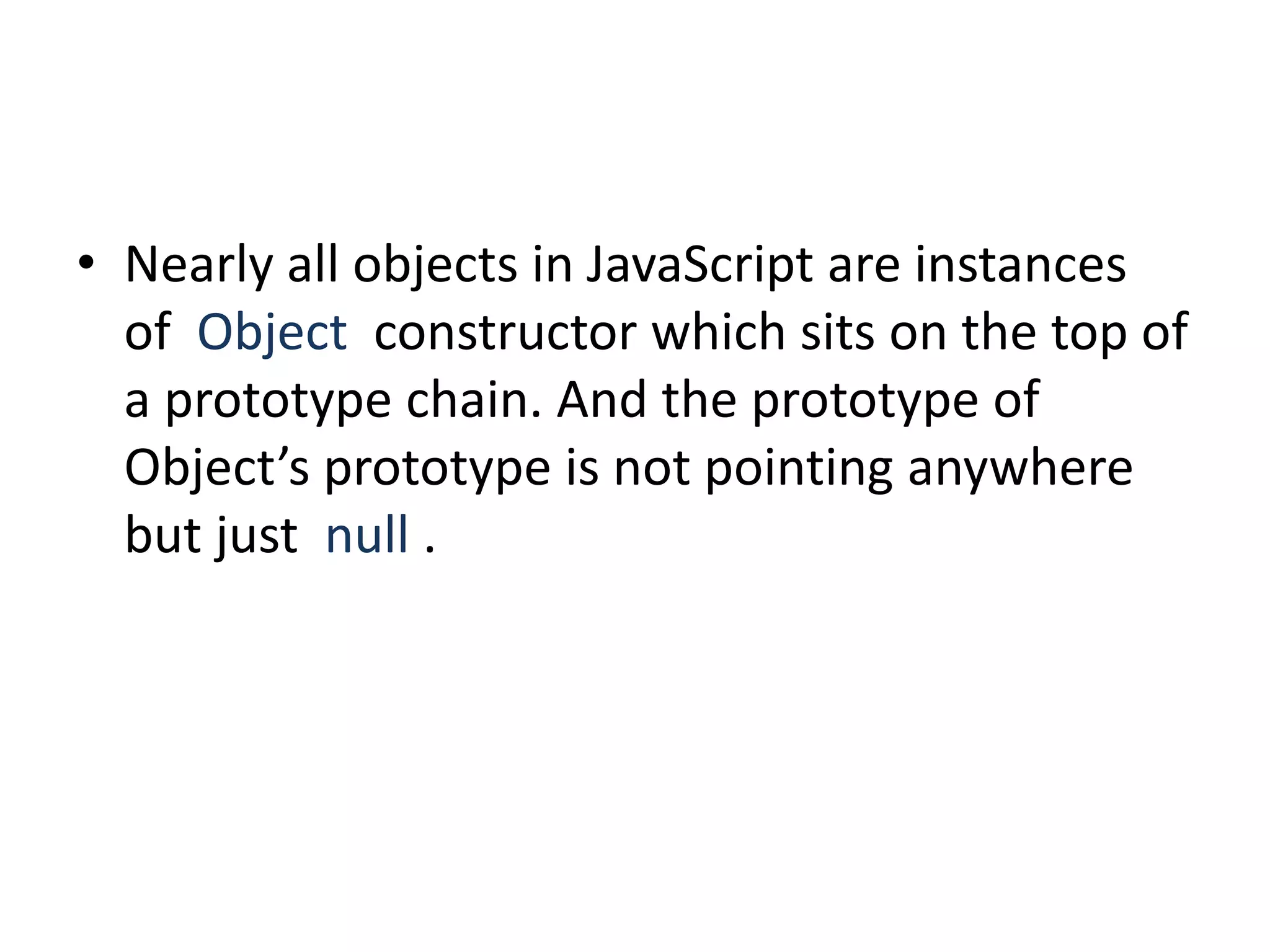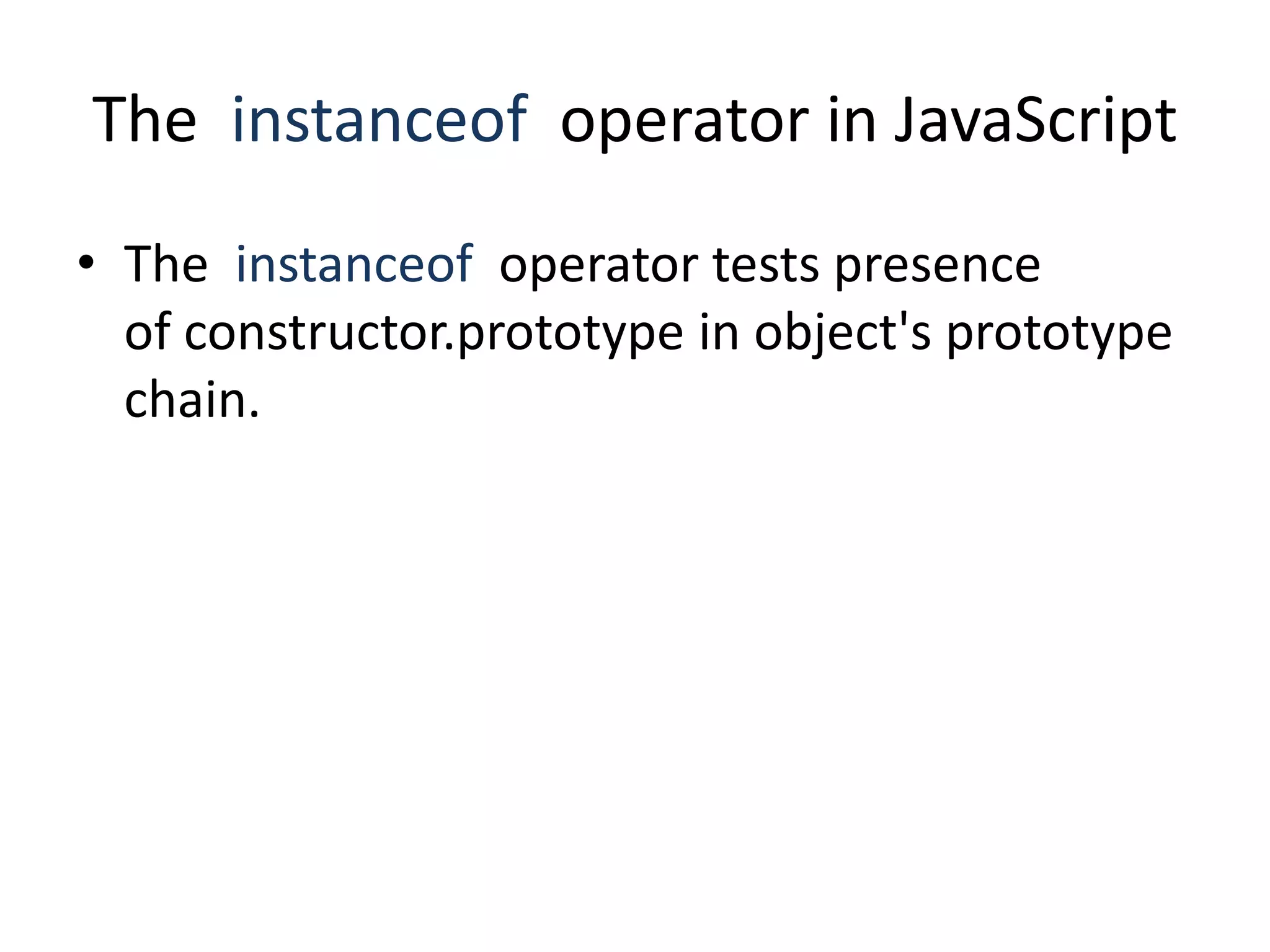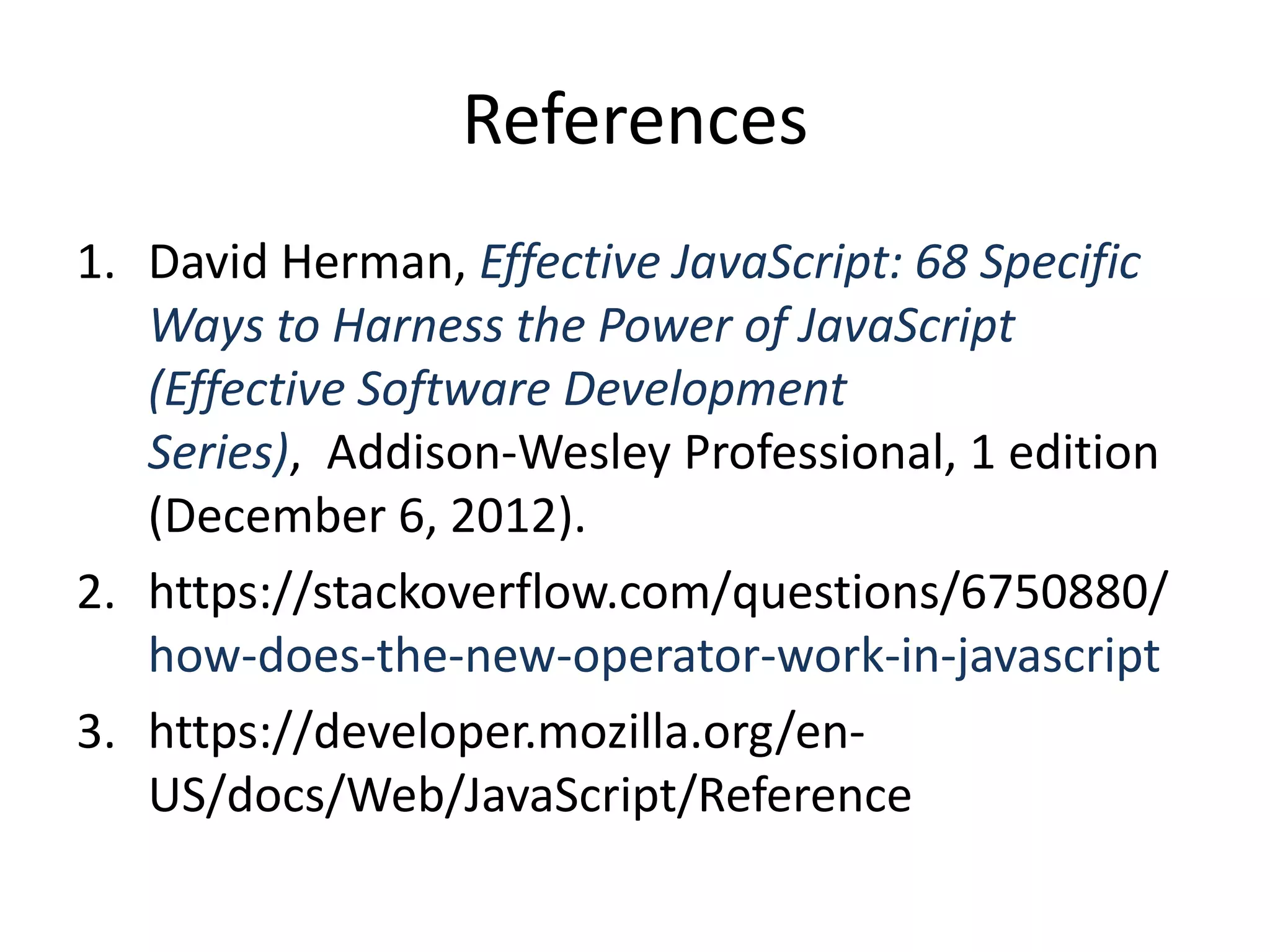The document discusses the fundamentals of objects and prototypes in JavaScript, explaining how JavaScript's inheritance model is prototype-based rather than class-based. It introduces the concepts of constructor functions, the 'this' keyword, and the 'new' operator, along with a student-grade example to illustrate prototypal inheritance. Additionally, it briefly explains how the 'instanceof' operator works and includes references for further reading.

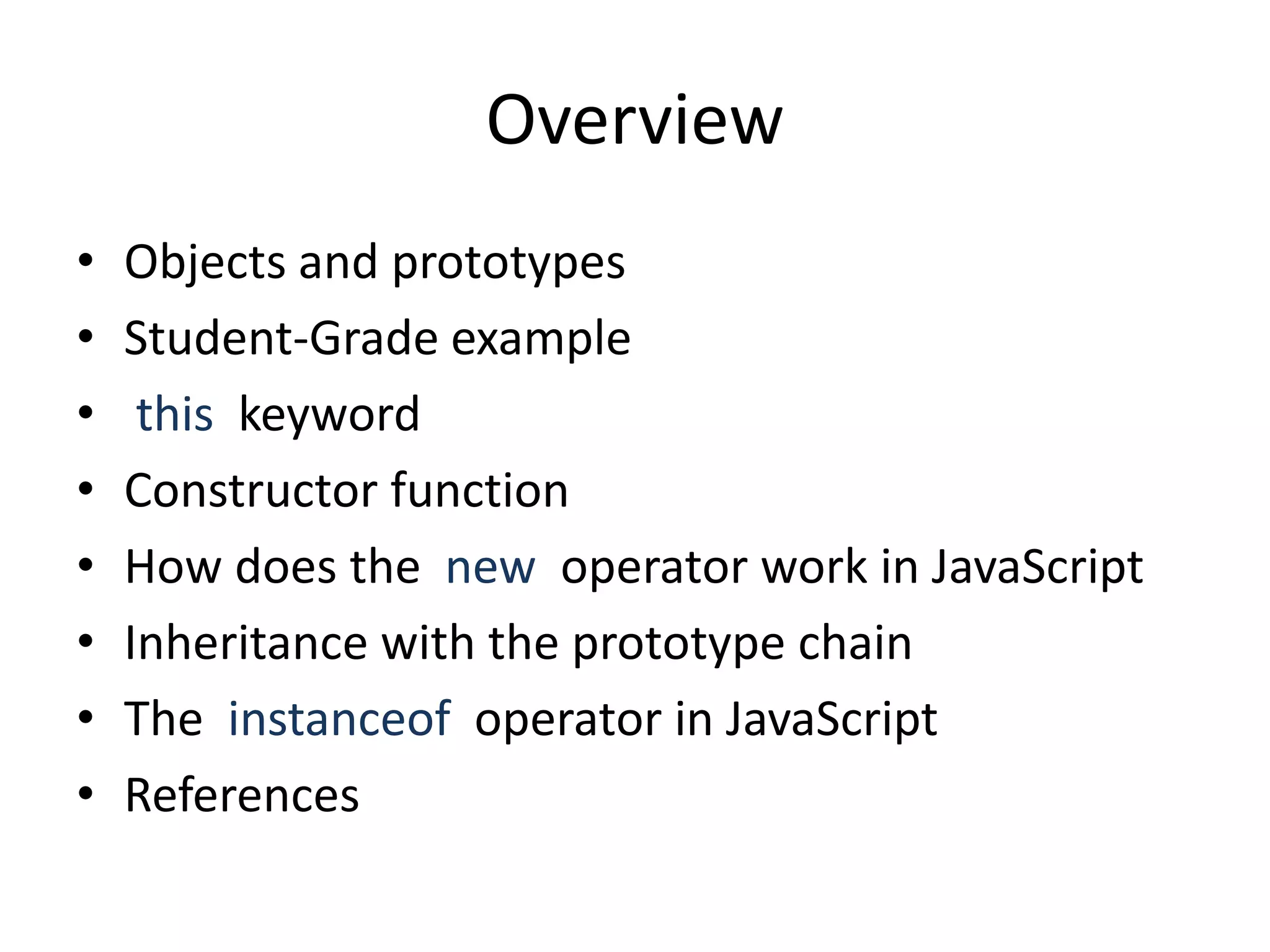
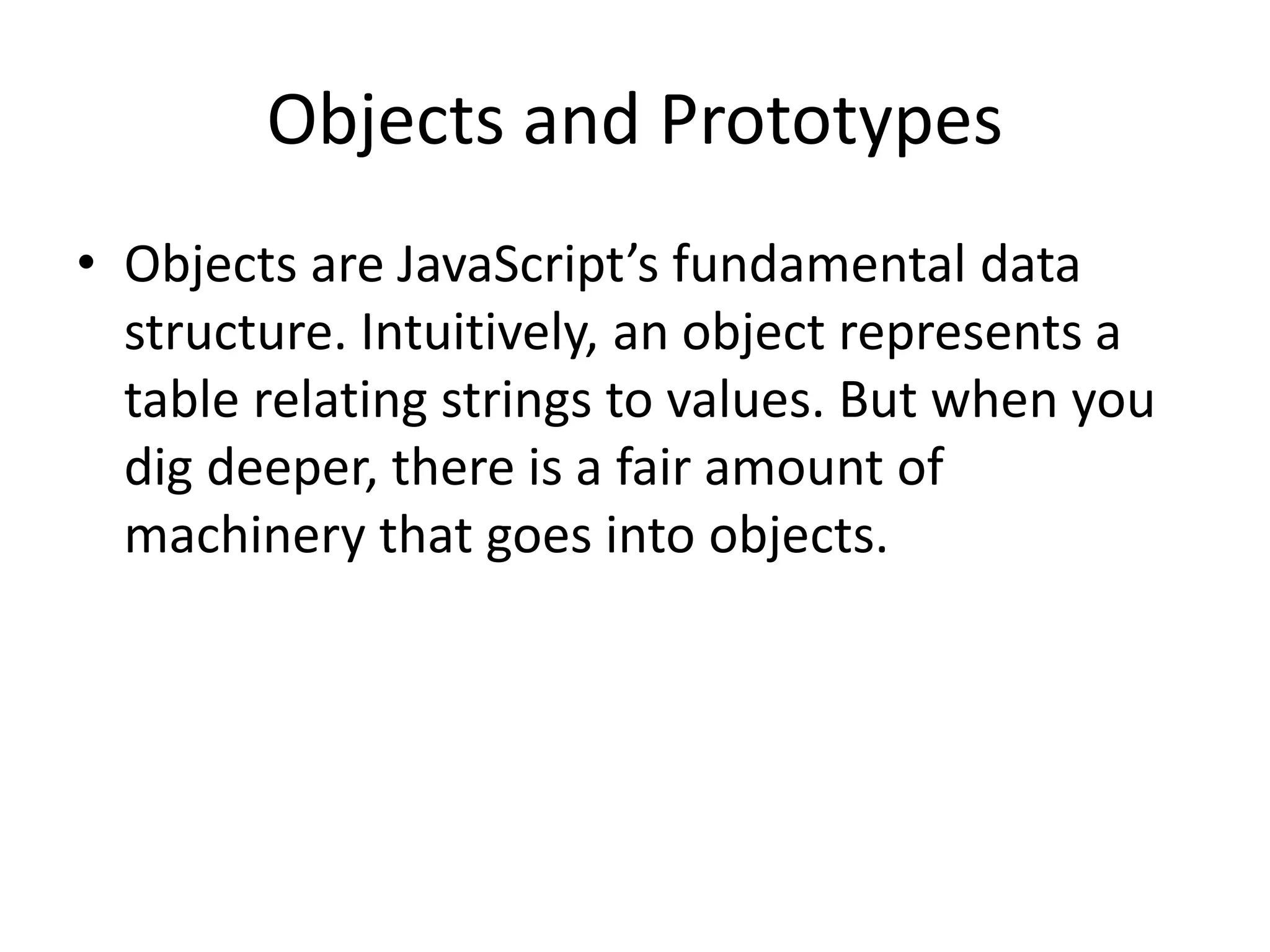
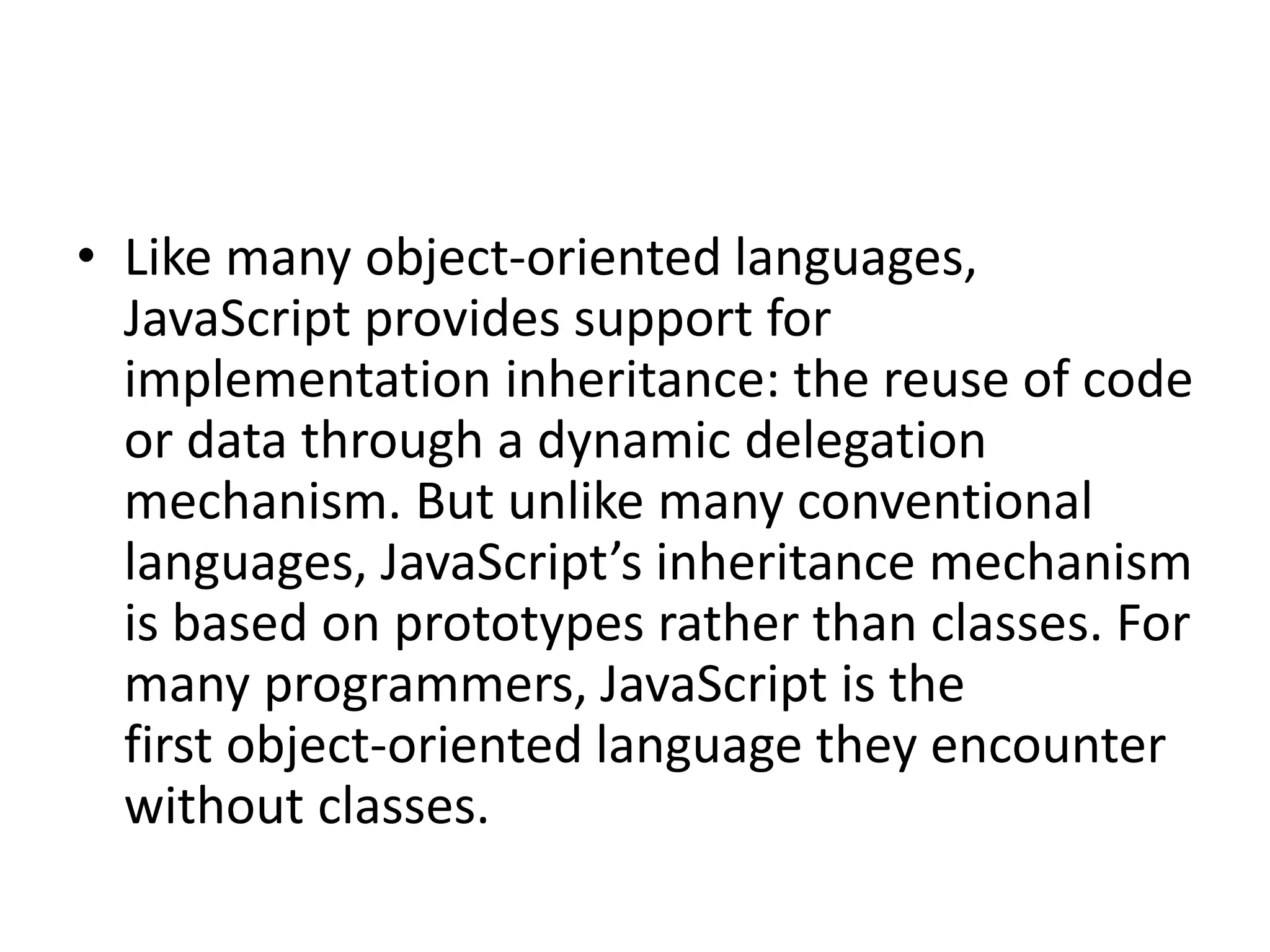
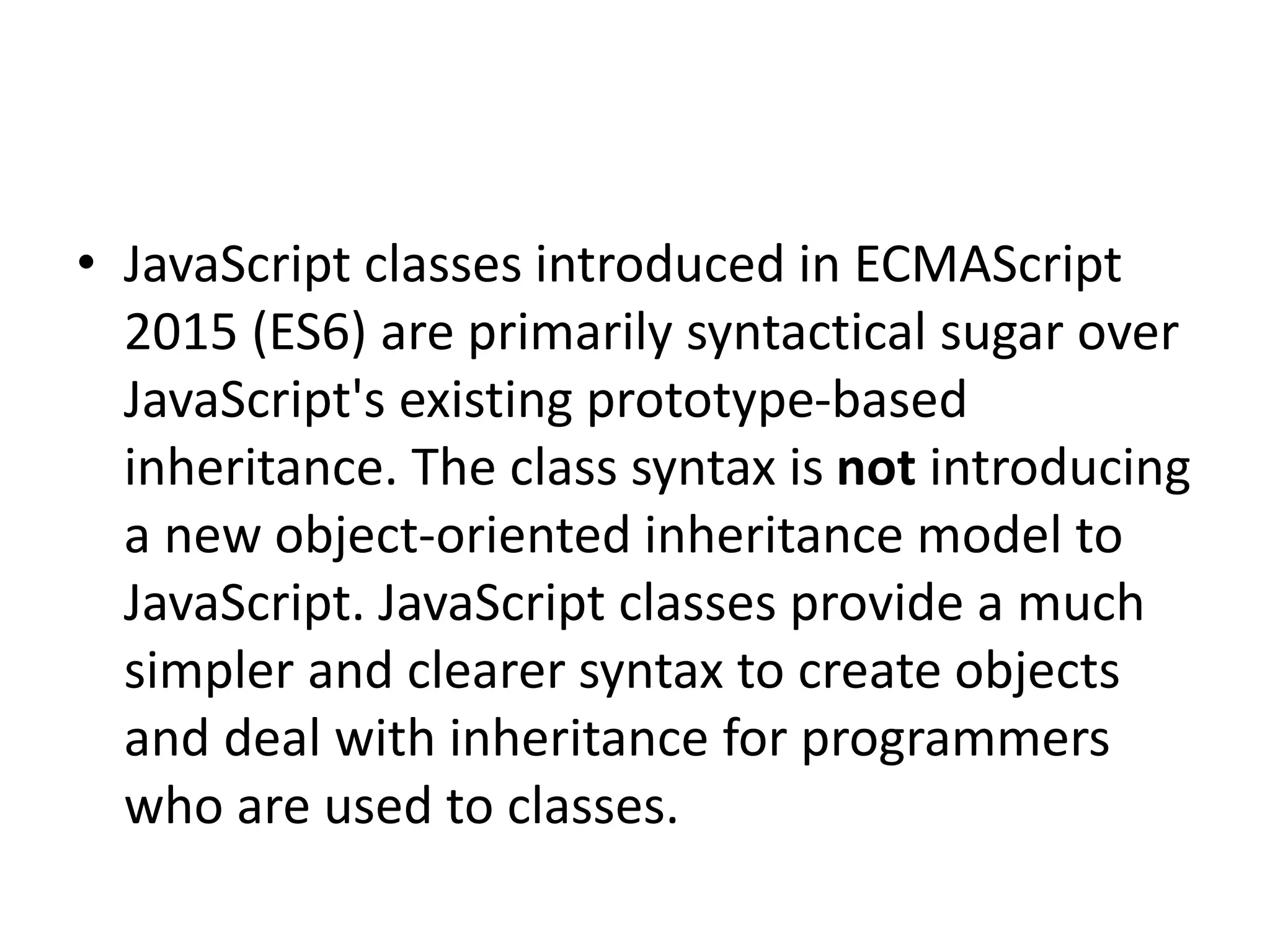
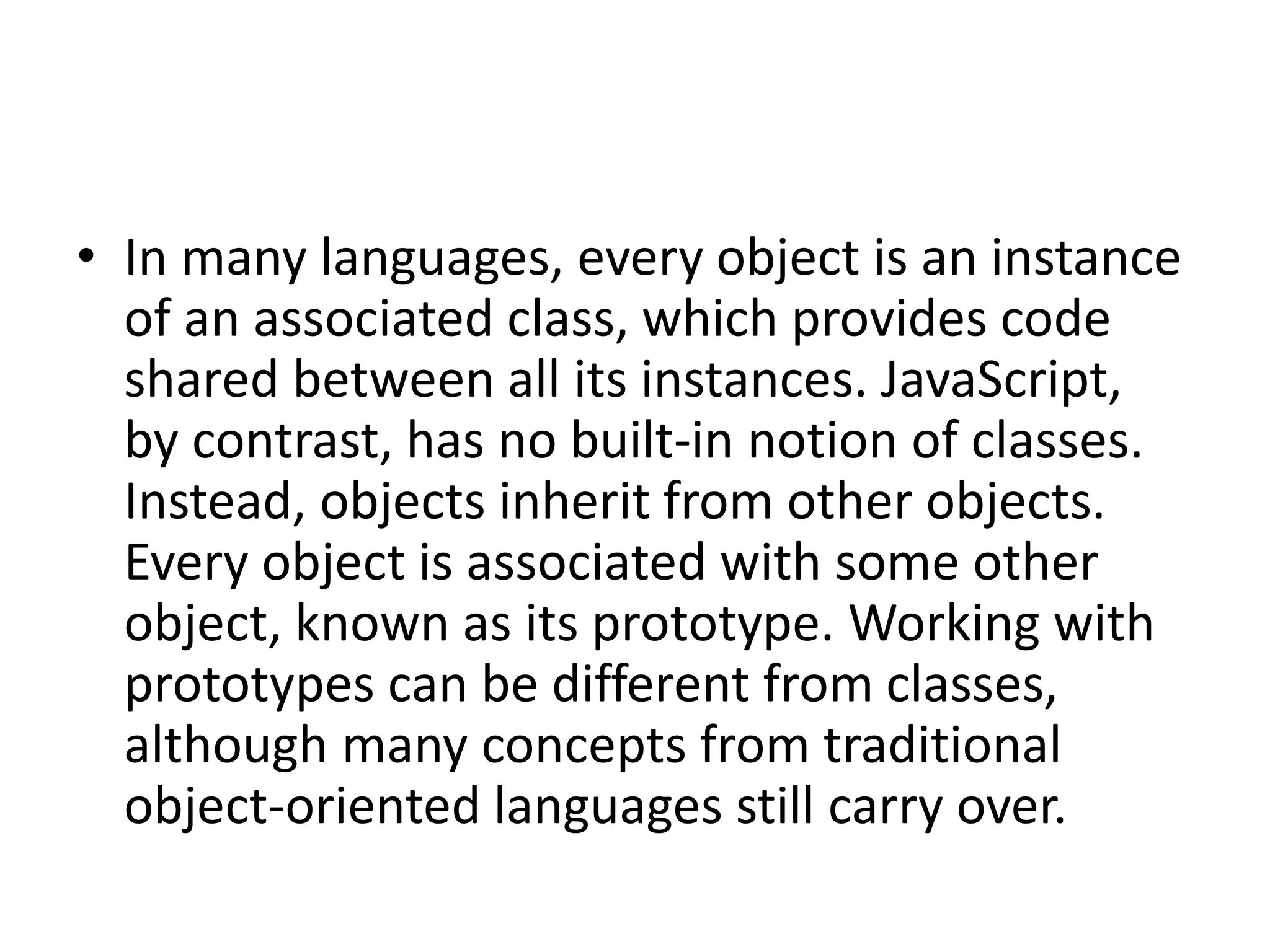
![Student-Grade Example
function Student(x) {
this.name = x;
this.grade = [];
}
Student.prototype = {
addGrade: function(x) {
this.grade.push(x);
}
};
var Tom = new Student("Tom");
Tom.addGrade(82);
Tom.addGrade(75);
Tom.addGrade(70);](https://image.slidesharecdn.com/function-and-prototypedefinedclassesinjavascript-170624230641/75/Function-and-prototype-defined-classes-in-JavaScript-7-2048.jpg)
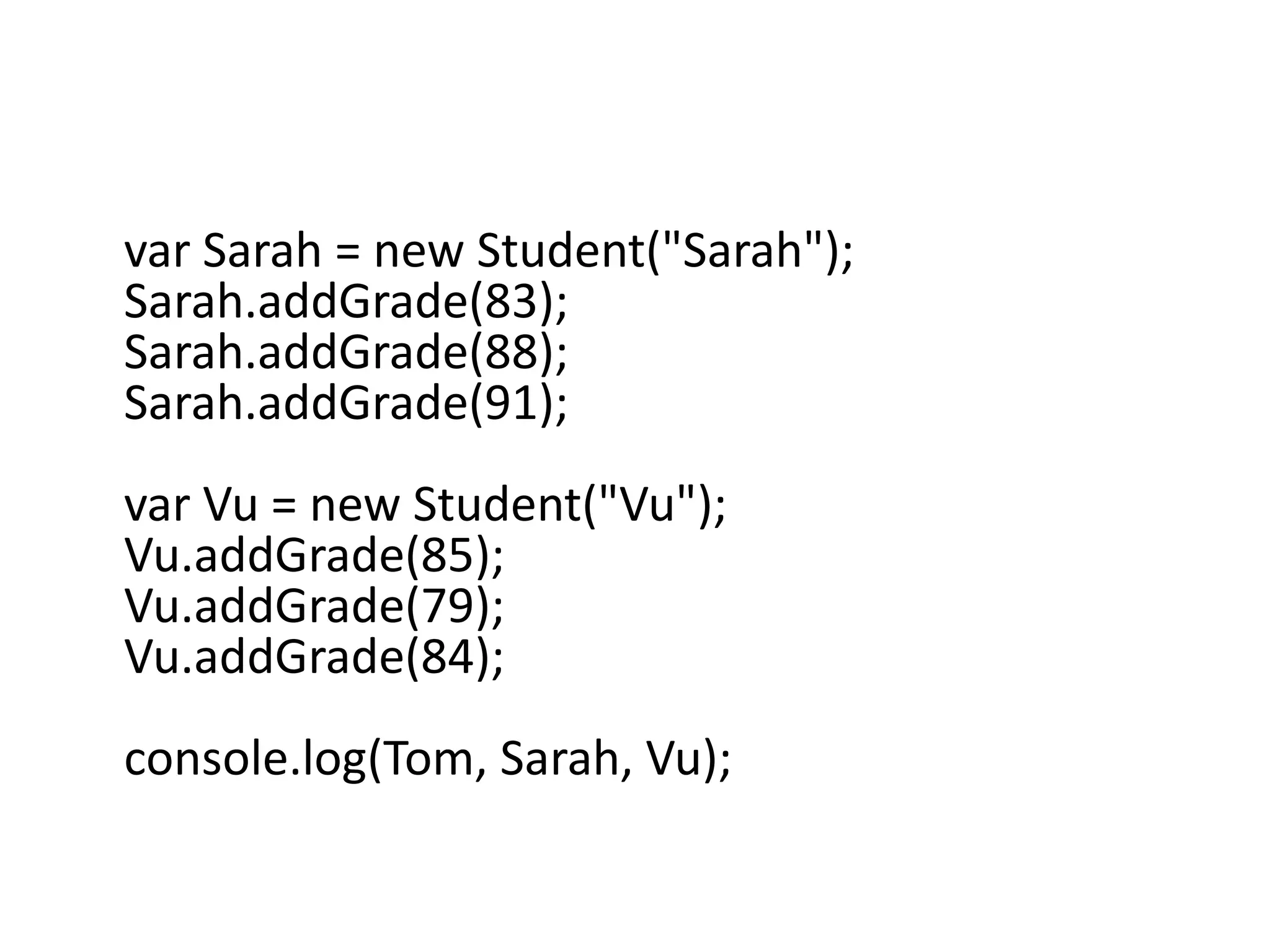
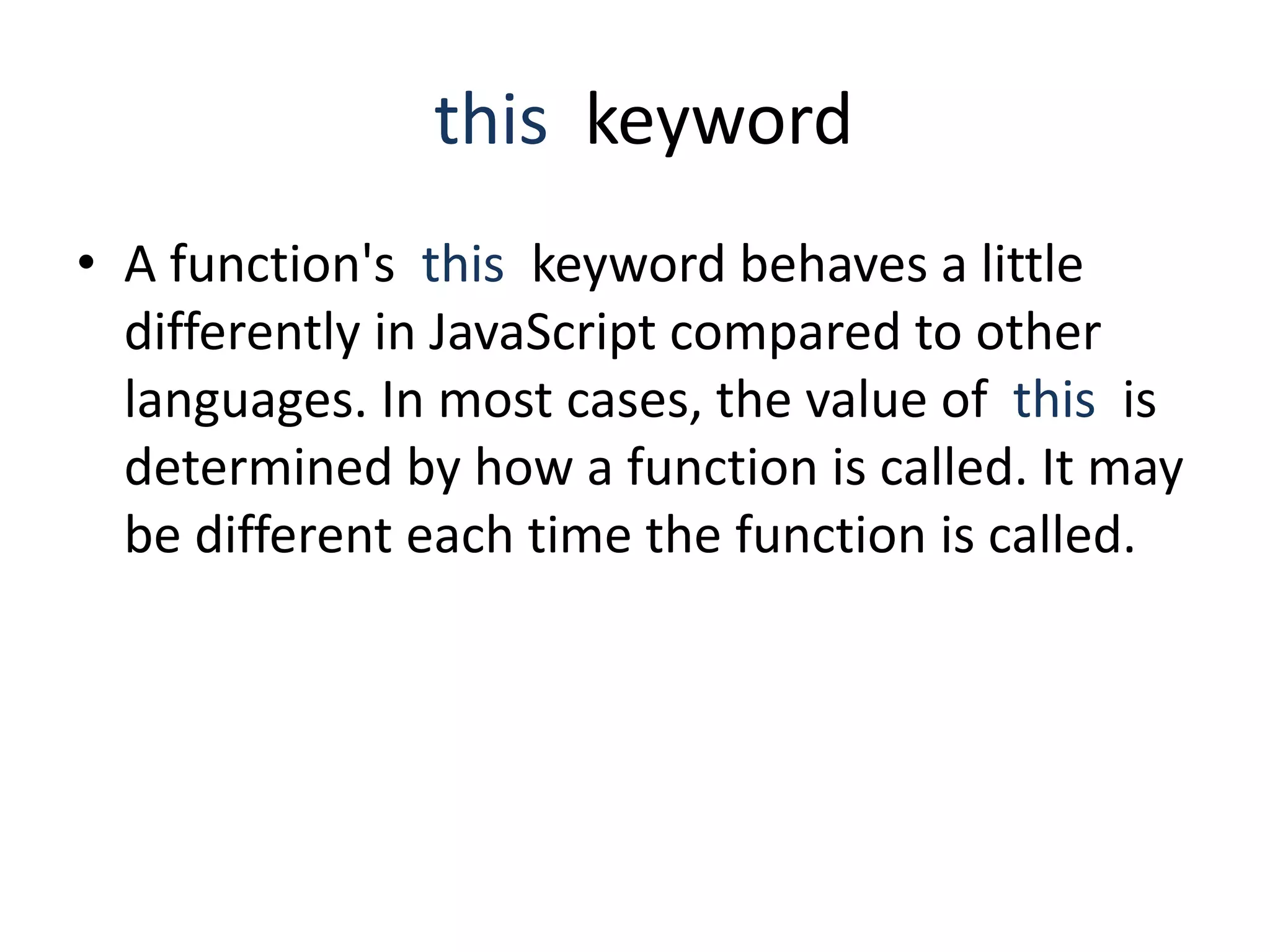
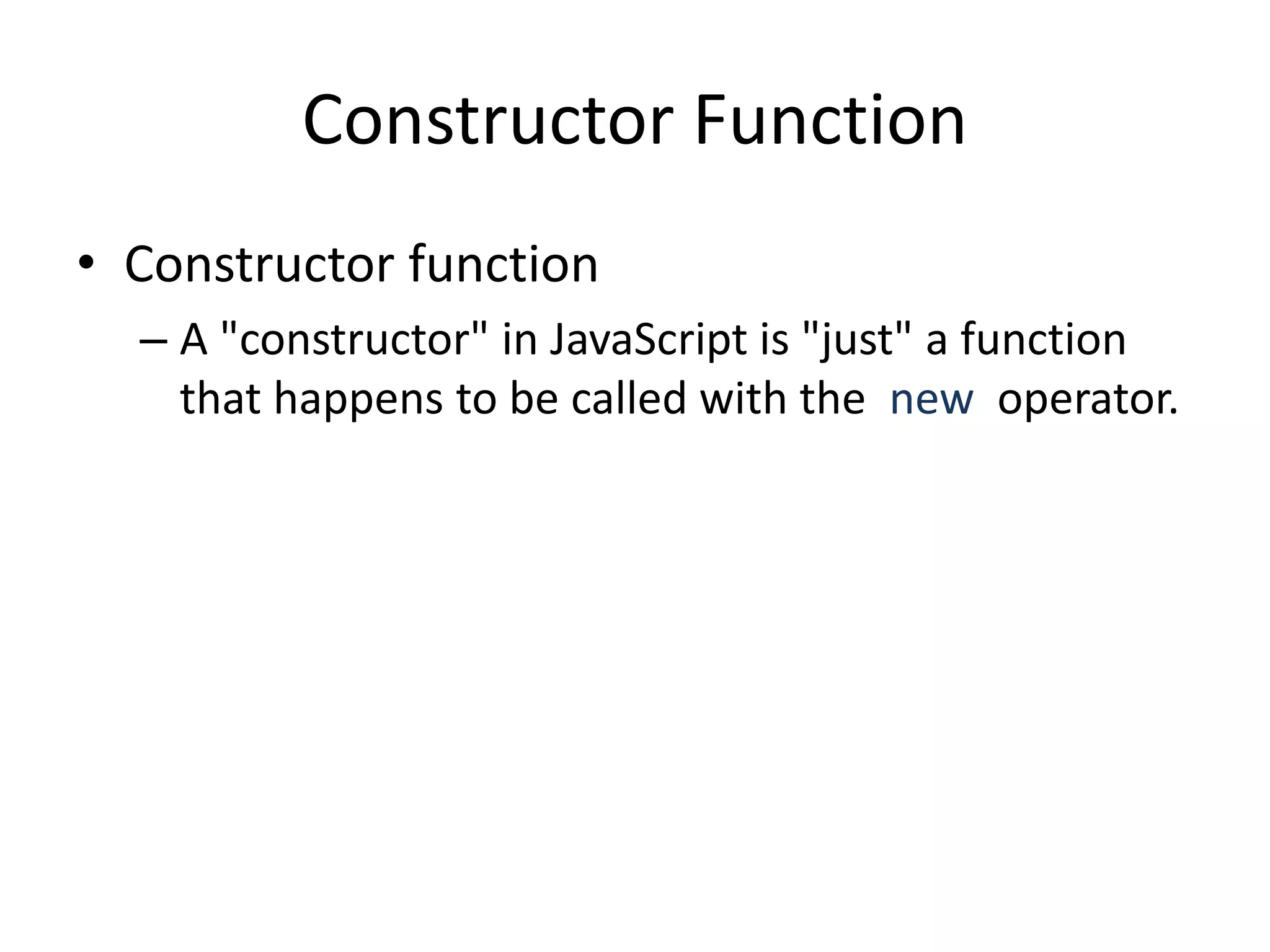
![How does the new operator work in
JavaScript?
• The new operator uses the
internal [[Construct]] method, and it basically
does the following:
– Initializes a new object
– Sets the internal [[Prototype]] of this object, pointing
to the constructor function prototype property.
– If the constructor function's prototype property is
not an object (but a primitive value, such as a
Number, String, Boolean, Undefined or
Null), Object.prototype is used instead.](https://image.slidesharecdn.com/function-and-prototypedefinedclassesinjavascript-170624230641/75/Function-and-prototype-defined-classes-in-JavaScript-11-2048.jpg)
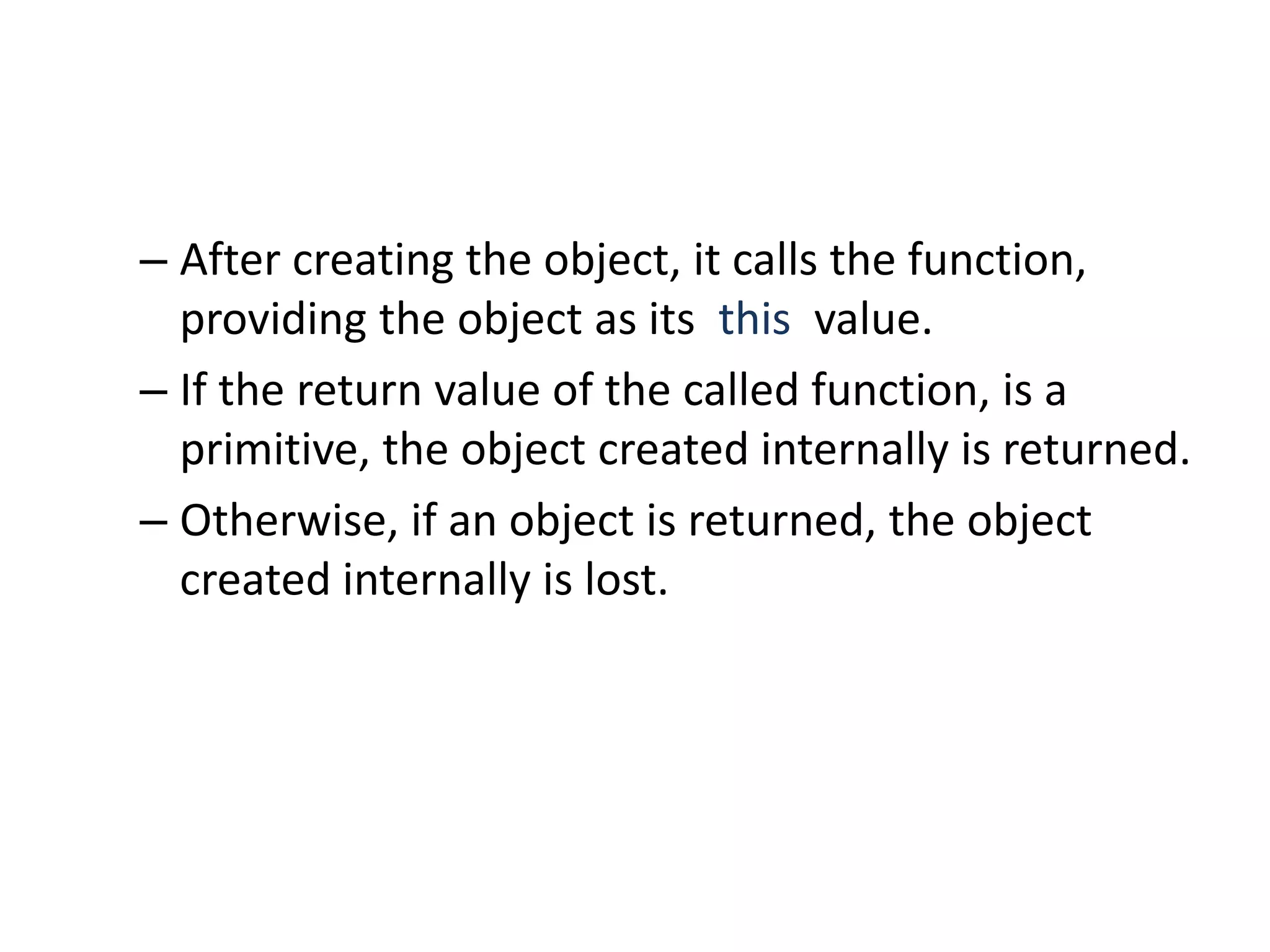
![• { name: 'Tom', grade: [ 82, 75, 70 ] } { name:
'Sarah', grade: [ 83, 88, 91 ] } { name: 'Vu',
grade: [ 85, 79, 84 ] }](https://image.slidesharecdn.com/function-and-prototypedefinedclassesinjavascript-170624230641/75/Function-and-prototype-defined-classes-in-JavaScript-13-2048.jpg)
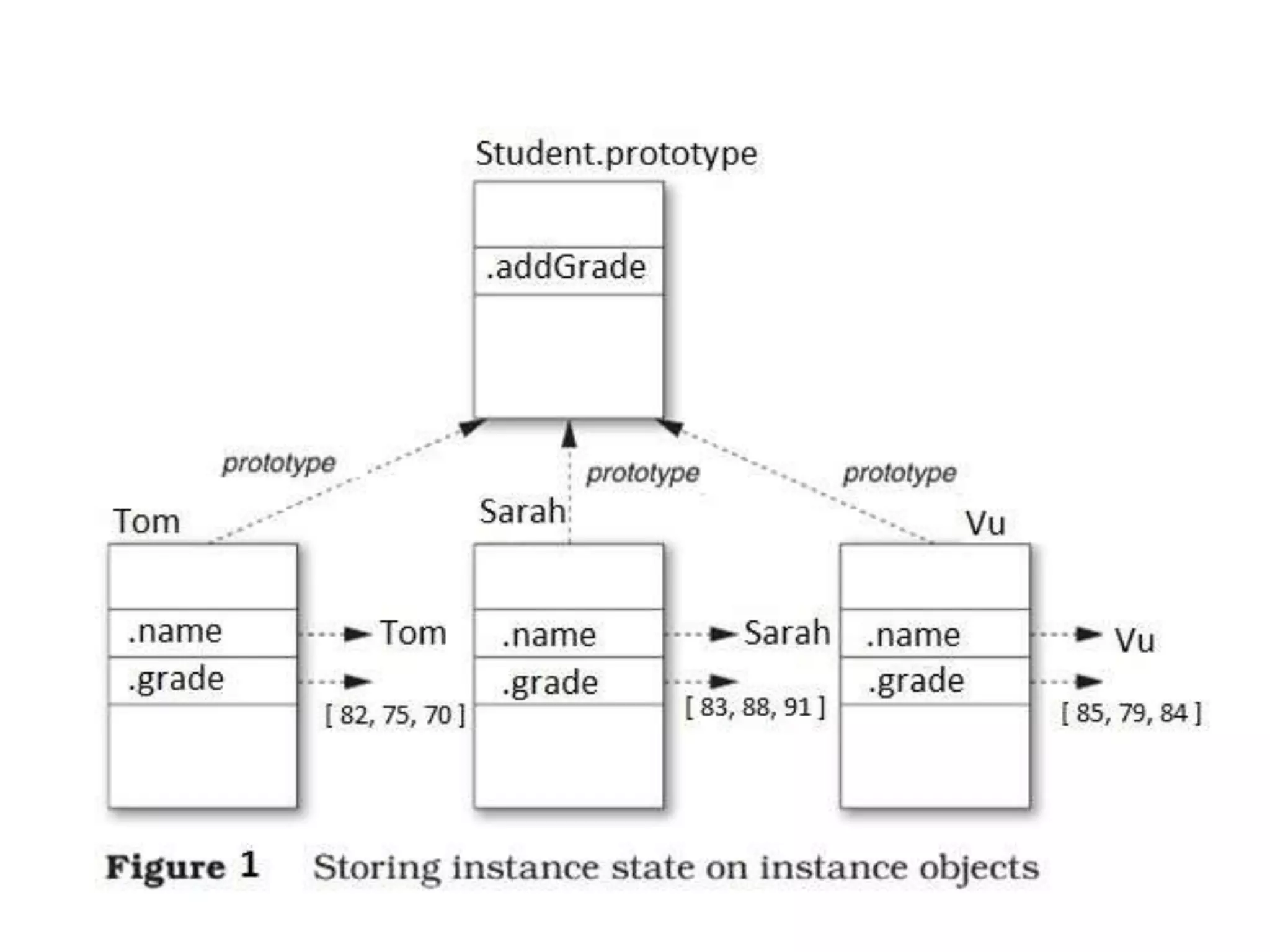
![Inheritance with the Prototype Chain
• When it comes to inheritance, JavaScript only has
one construct: objects. Each object has a private
property (referred to as [[Prototype]] ) which
holds a link to another object called
its prototype. That prototype object has a
prototype of its own, and so on until an object is
reached with null as its prototype. By
definition, null has no prototype, and acts as the
final link in this prototype chain.](https://image.slidesharecdn.com/function-and-prototypedefinedclassesinjavascript-170624230641/75/Function-and-prototype-defined-classes-in-JavaScript-15-2048.jpg)
